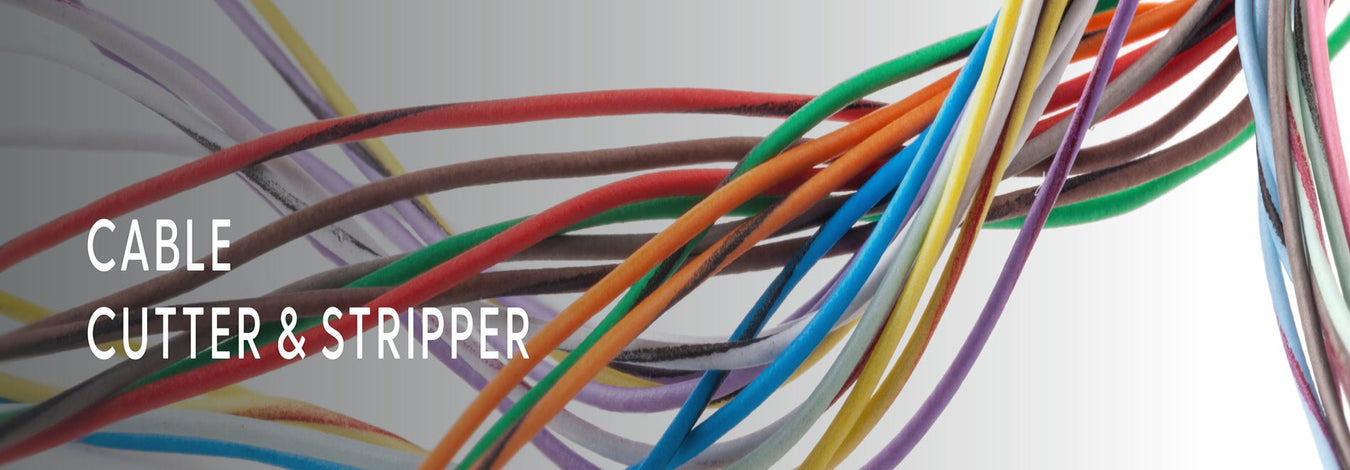
What is a Terminal Crimper?
Table of Contents
Types of Terminal Crimpers
1- Manual Crimpers 2- Ratchet Crimpers 3- Hydraulic Crimpers 4- Pneumatic Crimpers How to Use a Terminal Crimper
1- Prepare the Wire 2- Insert the Wire 3- Position the Crimper 4- Apply Pressure 5- Inspect the Connection Features of a Terminal Crimper
1- Adjustable Crimp Force 2- Jaw Capacity 3- Ergonomic Design 4- Durability Advantages of Using a Terminal Crimper
1- Speed 2- Consistency 3- Durability 4- Safety Final Thought
Some key factors remain paramount regarding electrical work, including reliability and safety. Whether you are a professional electrician or a DIY enthusiast, the tools are most important because they help make reliable and long-lasting connections. Therefore, one handy tool is the terminal crimper. But what is a terminal crimper, and why is it essential for the crimping terminals? Thus, let's explore the crimping tools and terminals to see how they fit in to provide reliable and protected connections.
What is a Terminal Crimper?
A terminal crimper is equipment used to join a wire with a terminal. Terminals are interconnections used to connect electrical elements, ensuring a safe and secure connection. In crimping, the terminal is bent around the wire, firmly holding it in position, and no soldering is required. The process enables the cables to withstand various conditions by creating small and tight layers, making them suitable for use in automobiles, industries, and household electrical systems. A good crimp eliminates loose connections, which can cause shorts or electrical fires, by providing electrical continuity.
Types of Terminal Crimpers
1- Manual Crimpers
These tools are hand-operated and need manual force to crimp the connection. They are suitable for limited use where little work can be done. A good example is the IWS-1424BN Wire Crimper.
2- Ratchet Crimpers
The primary characteristic of these mobile crimpers is that they feature a ratchet system, which provides a repetitive and secure crimp. They are mainly used in professional settings. The SN-02C Ratcheting Wire Crimper is an excellent example.
3- Hydraulic Crimpers
Hydraulic crimpers offer clients superior pressure for rugged applications, including electrical work. It is expected to utilize them in industrial buildings and for massive construction projects. An ideal example is the YQK-70 Hydraulic Terminal Crimper.
Read more: What is the Difference between a Hydraulic and Manual Crimping Tool?
4- Pneumatic Crimpers
Compared to hydraulic and mechanical crimpers, pneumatic crimpers, such as the AM 6-4/6-6 Pneumatic Crimping Tool, use compressed air to crimp, which is a quick and efficient process. These apply in production lines that produce vast quantities of product in harsh conditions.
Read more: What is a Pneumatic Crimper?
How to Use a Terminal Crimper
1- Prepare the Wire
Peel the insulation from the wire end to the appropriate length.
2- Insert the Wire
Slide the stripped wire into the terminal position accordingly.
3- Position the Crimper
When you slide it over the generated wire and terminal, the crimper's jaws should fit into the crimping area.
4- Apply Pressure
Apply the crimper handles with proper pressure, which must be balanced and firm. The ratchet mechanism or hydraulic pressure will compact the connection.
5- Inspect the Connection
After crimping, the connection should be checked to confirm that the wire is tightly sealed in the termination and the crimp.
Features of a Terminal Crimper
When selecting a terminal crimper, consider the following features:
1- Adjustable Crimp Force
Adjustable crimping force is crucial while dealing with various wire gauges and types of terminals.
2- Jaw Capacity
Check to see if the crimper's jaw capacity will accept the wire and terminal sizes you will utilize.
3- Ergonomic Design
Clamp comfort and grip design that minimizes hand fatigue, predominantly in extended usage periods, are ideal.
4- Durability
Select a high-quality crimper to withstand heavy usage.
Advantages of Using a Terminal Crimper
1- Speed
One prominent advantage of crimping is its speed, making it preferable for large tasks.
2- Consistency
Crimping tools provide gentle pressure for each crimp, ensuring each connection is equally rigid.
3- Durability
Adequately crimped terminals can withstand environmental conditions such as vibration, moisture, and corrosion, making them suitable for automotive and industrial applications.
4- Safety
Crimped connections are safer than most other electrical connections since they are less likely to work loose or cause shorts.
Final Thought
A terminal crimper is one of the essential tools required for professional electrical wire connections. It guarantees the safety, reliability, and effectiveness of joints that can withstand the test of time. Choosing the proper crimping tools and knowing how to use them effectively are crucial to avoiding future electrical problems, which are closely related to crimping and the quality of electrical work. Purchase your terminal crimper from iCrimp for a safe and reliable connection.
References





